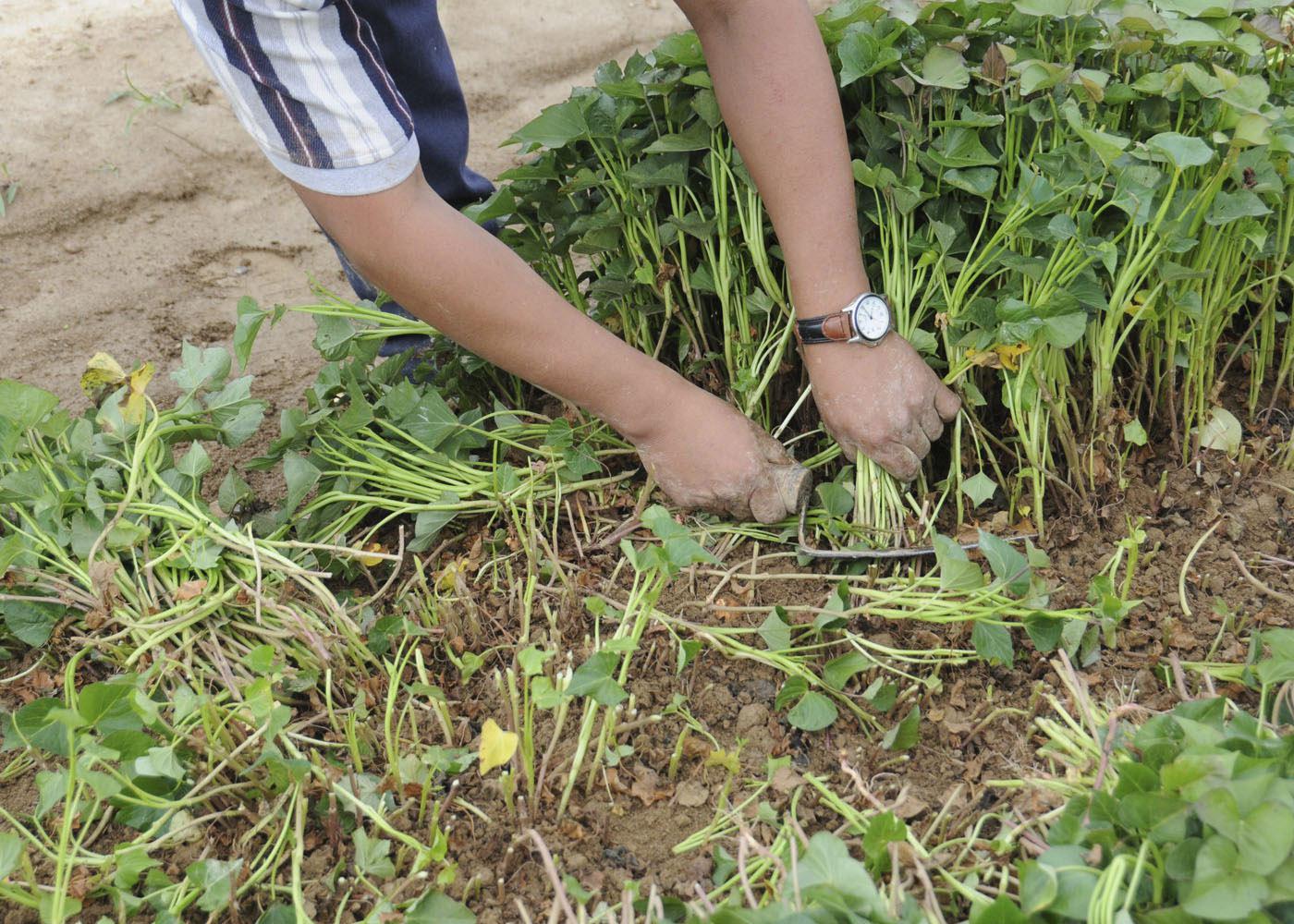Information Possibly Outdated
The information presented on this page was originally released on June 23, 2011. It may not be outdated, but please search our site for more current information. If you plan to quote or reference this information in a publication, please check with the Extension specialist or author before proceeding.
Producers plant part two of state sweet potato crop
MISSISSIPPI STATE – It takes two planting seasons to harvest one sweet potato crop, and hot, dry weather made this year’s second planting challenging for Mississippi growers.
In March, sweet potato growers bed their crop, which means they plant high-quality seed stock in the ground to produce transplants, known as slips. These slips are planted in May and June to produce the harvest in September and October of the state’s highly acclaimed sweet potatoes.
Bill Burdine, area sweet potato specialist in Chickasaw County with the Mississippi State University Extension Service, said producers had to take a short break from transplanting in early June. Temperatures were too high and the soil was too dry for the slips to survive.
“Once we picked up some rain, we went full speed ahead again,” Burdine said.
Planting slips is a labor-intensive process.
“The planters require two people per row to actually put the transplants in the machine,” Burdine said. “The transplanter runs at half a mile per hour, and most growers have six- or eight-row transplanters.”
A six-row transplanter carries 12 people, who hand-place each transplant into the machine, which plants it in the ground.
Typically, slips are cut in the morning, gathered into crates, and set aside for two days until they sprout their own root systems. Each afternoon, laborers plant the slips that were cut on previous mornings.
“Because the transplant doesn’t have a root system when it is actually set, if the soil is too dry and the weather too hot, there is a chance of losing that plant,” Burdine said.
Once in the ground with sufficient soil moisture, the slips take root quickly and deeply. Within two weeks, the growing transplant is safe from all but extreme drought.
Mississippi is expected to plant about 21,000 acres of sweet potatoes in 2011, which is a typical number for the state in recent years. Mississippi sweet potatoes are sought-after because of their uniform shape and good texture and high sugar content.
“Our soils just produce a high quality sweet potato,” Burdine said.
Carter Edmondson, owner of Edmondson Farms in Vardaman, has been growing sweet potatoes for 40 years. He is struggling with challenges to his slips’ ability to get established.
“The heat is worse than the dry weather,” Edmondson said. “We’ve had to reset about 50 acres so far, and we hardly ever have to reset sweet potatoes.”
Edmondson’s 2,850 acres make him one of the largest sweet producers in the state. He rotates this crop with cotton, corn and soybeans, relying on seasonal labor to farm this labor-intensive crop.
“We have a good crew leader, and most of our crews come back each year,” Edmondson said. “Some have been working with me for years.”
Rotating sweet potatoes with other crops allows producers to battle diseases, weeds and nematodes effectively.
Burdine is operating the MSU Extension Service sweet potato research center on three rented acres in downtown Vardaman, the heart of sweet potato production. The land had significant reniform nematode problems, and Burdine is conducting four replicated studies on fumigants and preplant insecticides to control this costly pest.









